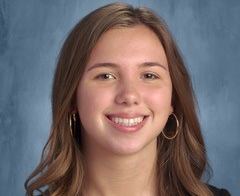
Related Stories
Digital Equity Champions for All Learners: Student Advocacy Addresses Digital Equity Barriers for Students with Disabilities
Ava’s Voice is dedicated to providing resources and support for families, students, and schools on Usher Syndrome, a genetic condition that is a leading cause of profound deaf-blindness. Because the syndrome results in a progressive impairment of hearing and vision, the educational needs of learners with Usher Syndrome can change drastically over time. Ava’s Voice educates teachers, schools and families so they can make informed decisions on how to meet the specific needs of students with Usher Syndrome. Additionally, the organization seeks to empower students with Usher Syndrome through programs that connect them with peers, role models, and mentors and other supports and resources for families.
Ava Bullis, a student-advocate with Usher Syndrome and daughter of the organization’s founder, leads various informational and training sessions about Usher Syndrome in schools. In a recent conversation with the U.S. Department of Education’s Office of Educational Technology (OET), Bullis spoke about her experiences and the evolution of Ava’s Voice.
Bullis highlighted specific digital barriers that affect students with Usher Syndrome and other disabilities that result in sensory loss. She said, “Most school districts provide devices for students to access their learning and testing platforms, and the most frustrating thing is that these devices are not accessible.”
The COVID-19 pandemic brought the inaccessibility of educational technology to the forefront. In response to the lack of awareness of accommodations for learners with Usher Syndrome, Bullis and her mother began running a series of educational sessions on Usher syndrome for her teachers, which the organization later developed into resources and training materials to empower other students with Usher Syndrome to become self-advocates. “Every year I would train my teachers and…give…[a] presentation about what my vision’s like, what my hearing’s like, and the resources and technology I utilize [to navigate the dual sensory loss]. We also spent time doing this in the past for local school districts in New Jersey” Bullis said.
When educators learn about the experiences of students with Usher Syndrome, they begin to understand why accommodations, such as the use of assistive technology, are necessary and how they can unlock opportunities for learners with disabilities. “I’m more than capable of [meeting high academic standards] and being competitive with my peers. With the appropriate resources and accommodations, [it] goes a long way,” Bullis explained.
Students with disabilities and their families have unique insights that can help inform the development of innovative solutions, because of their firsthand experiences and deep understanding of accessibility. Self-advocates have developed their own strategies to overcome different barriers and can thus provide valuable feedback on the accessibility, usability, and effectiveness of the digital solutions used in classrooms to accommodate diverse learners. “It is important to have students’ perspective[s]… we deal with these challenges on a day-to-day basis, so we have to troubleshoot for ourselves, and by doing that we’ve become so informed.” Bullis told OET.
When asked if she has any advice for leaders regarding digital equity and accessibility, Bullis reflected, “Accessibility isn’t a set outline…there isn’t a set of steps to go about to make something accessible. It’s all about…addressing the student’s needs on a one-to-one basis. So I think it’s really important that there’s open communication between the student and whoever is involved in their planning of accommodations.” Trainings for educators and staff – like those provided by Ava’s – can help school personnel better collaborate with learners with disabilities and their families/caregivers to meet their technological needs and ensure digital equity for all learners.


